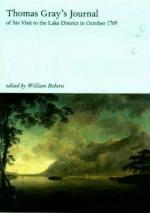|
This section contains 3,131 words (approx. 11 pages at 300 words per page) |

|
SOURCE: "Collins and Gray," in Naturalism in English Poetry, E. P. Dutton & Company, 1920, pp. 42-65.
In the following excerpt, Brooke compares Gray's poetry with that of William Collins and delineates Gray's chief creative influences, assessing the impact of his works on the transition in English poetry from Neoclassicism to Romanticism.
… [William Collins and Thomas Gray are] connected with the school of Dryden and Pope by a certain artificial or conventional note in their diction, by a certain want of frank Naturalism; so that, even in their beautiful work, a note of commonplace is heard, a prosaic note. This is less in Collins than in Gray, but, in its occurrence in the poetry of both, they are together. The juxtaposition of their names, at this point, is not unfitting. At another point they are also together. They both went back in search of Nature and Beauty, not to Horace...
|
This section contains 3,131 words (approx. 11 pages at 300 words per page) |

|


